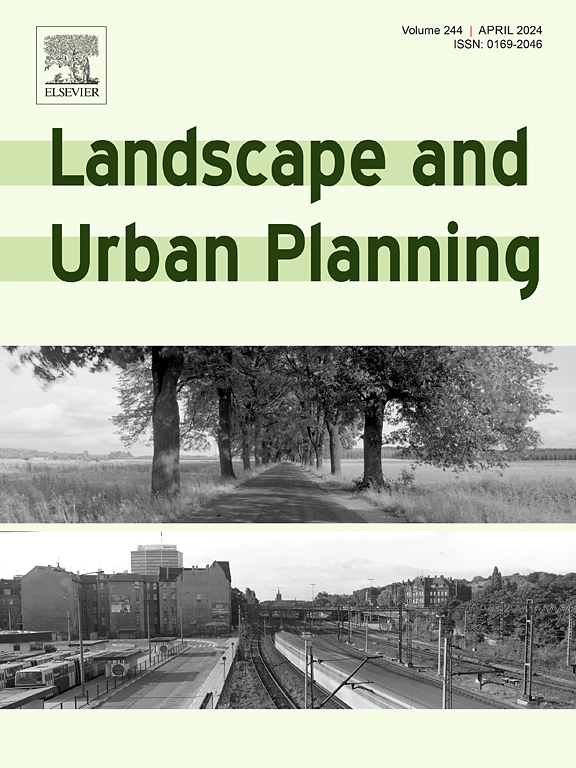Which forest type do visitors find most attractive? Integrating management activities with the recreational attractiveness of forests at a landscape level
IF 7.9
1区 环境科学与生态学
Q1 ECOLOGY
引用次数: 0
Abstract
This article presents a spatially integrated method for forest management planning and outdoor recreation in forest areas. A survey of 1402 respondents with varied socio-demographic profiles assessed the recreational attractiveness of forest areas. We classified silvicultural regimes into four categories (no management, low, medium, and high-intensity management) and mapped the potential attractiveness of forest areas by means of exploratory spatial data analysis using the Corine Land Cover and Geoportal database. The analysis involved three levels: local (1×1 km grid), district, and regional. By applying local Moran’s I, an indicator of spatial association, the study identified “hotspots and outliers” of recreational attractiveness at a landscape level. The identification of spatial association types served as the foundation for making recommendations for forest planning. The findings indicate that a specific combination of site and terrain characteristics influences perceived attractiveness as respondents showed the highest recreational preferences for old multispecies stands located on terrain with pronounced relief. Nature conservation, surface water, and cultural heritage sites substantially enhanced the recreational attractiveness of forest areas. Our model may be a valuable tool for identifying the recreational attractiveness of forest areas and guiding specific regional forest management strategies. It provides useful information for aligning silvicultural planning with the preferred recreational variant, enabling the identification of forest areas with a given type of recreational attractiveness and implementing forestry practices conducive to enhancing ecosystem services.
哪一种森林类型最吸引游客?在景观层面将管理活动与森林的娱乐吸引力结合起来
本文提出了一种森林经营规划与林区户外游憩的空间整合方法。一项对1402名具有不同社会人口特征的受访者的调查评估了森林地区的娱乐吸引力。我们将造林制度分为四类(无管理、低管理、中管理和高管理),并利用Corine土地覆盖和Geoportal数据库进行探索性空间数据分析,绘制了森林地区的潜在吸引力。分析涉及三个层面:地方(1×1公里网格)、地区和区域。通过应用当地的Moran’s I(一种空间关联指标),该研究在景观水平上确定了娱乐吸引力的“热点和异常值”。空间关联类型的确定是提出森林规划建议的基础。研究结果表明,场地和地形特征的特定组合影响了感知吸引力,被调查者对位于明显起伏地形上的古老多物种林分的休闲偏好最高。自然保育、地表水和文化遗产大大增强了林区的娱乐吸引力。我们的模型可能是一个有价值的工具,以确定林区的娱乐吸引力和指导具体的区域森林管理策略。它提供了有用的信息,使造林规划与首选的娱乐类型保持一致,从而能够确定具有特定类型娱乐吸引力的森林地区,并实施有利于加强生态系统服务的林业实践。
本文章由计算机程序翻译,如有差异,请以英文原文为准。
求助全文
约1分钟内获得全文
求助全文
来源期刊

Landscape and Urban Planning
环境科学-生态学
CiteScore
15.20
自引率
6.60%
发文量
232
审稿时长
6 months
期刊介绍:
Landscape and Urban Planning is an international journal that aims to enhance our understanding of landscapes and promote sustainable solutions for landscape change. The journal focuses on landscapes as complex social-ecological systems that encompass various spatial and temporal dimensions. These landscapes possess aesthetic, natural, and cultural qualities that are valued by individuals in different ways, leading to actions that alter the landscape. With increasing urbanization and the need for ecological and cultural sensitivity at various scales, a multidisciplinary approach is necessary to comprehend and align social and ecological values for landscape sustainability. The journal believes that combining landscape science with planning and design can yield positive outcomes for both people and nature.
 求助内容:
求助内容: 应助结果提醒方式:
应助结果提醒方式:


